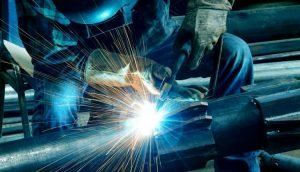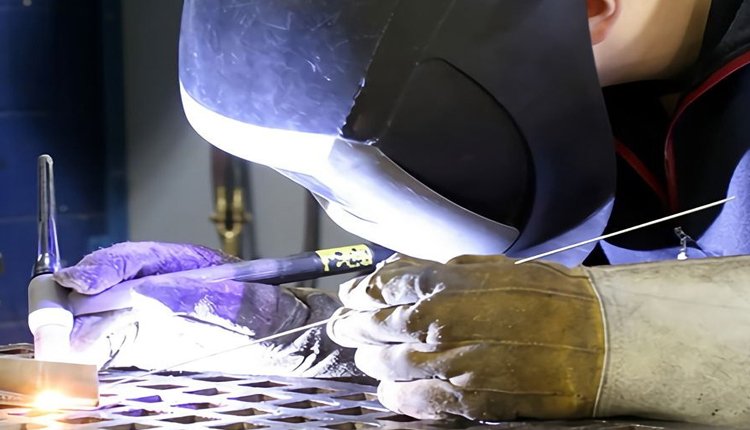4 Popular Types of Welding Technology
Techdigitalweb – Welding technology helps people understand how it works. This system allows humans to work with metal, whether for empowering or exciting parts.
The process allows us to see the welder transformation by using sparks and heat. Because of that, this reading presents you with skills for welding. Below are some popular types for your reference.
Gas Metal Arc Welding

People call this welding GMAW that also refers to Metal Inert Gas or shortened as MIG. It is a high-speed process but allows us to have an economical process.
This type uses a shielding gas with the electrode wire. Both heat up to join the two metals. The process joins an arc between the base metal.
It requires a constant voltage during the process. Besides, the operator needs a direct-current power source as well. It should continuously supply the consumable electrode.
The GMAW/MIG includes one of the most common processes in industrial welding. It applies plate and large bore pipe. The electrode applied is bare and contains no coating or core.
There are four primary processes in this method.
Globular Transfer
This process can produce a rougher weld bead. It happens because the metal droplet size and the propensity are spattering. The operator can use this method for welding thick metal plates and in horizontal positions.
In a globular transfer of welding technology, the process operates between short-circuiting and spray transfer. We can see the process clearly during the welding. The welding wire has large droplets or globs.
This shape is typically irregular and also larger compared to the wire diameter. It transfers across the arc directly to the weld pool.
Short-Circuiting
The name of this process represents how it works. The welding wire touches the base metal quickly. This mode effectively creates a short electrical contact and transfers the weld metal to the joint.
It is in a fast repeated tapping method and occurs many times per second. It occurs from 90 to 200 times per second.
Here, we can see that the process produces little spattering. So, this method applies to any welding position.
Spray Transfer
In spray transfer, the process transmits tiny droplets of molten metal. It requires a steady fashion. So, it can maintain a steady-contact arc welding when the process happens.
However, this method results in little splatter. Thus, it is better to apply horizontal pieces with a thick and flat shape.
In any process, this one is quite high and easy to use. It applies a smooth process. It requires a stable arc and can weld faster than others.
The process requires high voltages and amperages. It provides higher productivity in welding technology.
Spray transfer welding pairs with a metal-cored wire, both flat and horizontal. This way can increase productivity because of the fast travel speeds. Additionally, the process has minimum spatter.
Pulsed-Spray
This process is almost similar to Spray Transfer. Yet, it applies a high-low current pulse to enable micro-cooling periods. Because of that, the process is applicable in various metal plate thicknesses.
We can also find this type of process in most welding positions. The term ‘cooling’ describes pulsed spray.
It is the moment when lower voltage provides a cooler weld. The estimated temperature is still several thousand degrees Fahrenheit. Compared to a high-voltage portion of the cycle, it is considered cooler.
If we know all the welding processes, we can understand the temperature that is applied there. So, we know that all welding requires extreme temperatures during the process.
In this mode, the operator can notice a distinct sound difference. It makes them compare to other methods.
The sound happens in this welding technology because of the power source. It cycles between a high peak current or voltage. Besides, it also cycles at a low background current.
The peak current produces a small wire droplet. It moves toward the weld pool. Meanwhile, the low background current does not result in a metal transfer.
The process of cycling takes a medium time. It occurs between 30 to 400 times per second.
Gas Tungsten Arc Welding

This process is also known as GTAW or TIG (Tungsten Inert Gas). It applies commonly to thick stainless steel. Besides, this type is also popular in welding non-ferrous metals.
This process uses a fixed consumable tungsten electrode. It helps to produce the weld. If we compare it to other processes, like MIG, Stick, or Flux-Cored Arc Welding, this process consumes more time.
The non-ferrous metals melting points can be various. Thus, the operator must do extra care in identifying the base metal composition.
Both Stainless Steel and Steel contain Iron. As both are classified as Stainless Steel, the metal must have a minimum of 11% Chromium. So, Carbon Steel can melt at a temperature of 2,600 to 2,800-degree F range.
Flux Cored Arc Welding
The welding technology knows this process as FCAW. It can be an alternative to shield welding.
As a semi-automatic arc weld, FACW is found in most construction projects. The reason is this process applies high welding speed and portability.
The process offered has many methods. That is why it is applicable in various welding projects.
The application depends on the welder model that is being used. Moreover, the operator should see the type of wire chosen for the application.
The flexibility of the process can be broadened to voltage levels, many operating angels, and polarity used. Additionally, it should also consider the wire feed speed.
The metal newly joined can cool quickly because of the faster welding speed. The welding technicians should use a flux-cored wire. So, they must be aware of the porosity located in the welded joint.
The FCAW is applicable commonly under industrial ventilation or outdoor settings. It happens because of the smoke and fumes produced during the process.
The Bottom Line
The above explanation lets us learn about the ideal filler metals applied. It enables the welding operator to understand the advantages and limitations. So, they can gain consistency in weld quality.
The speed of each is not the same as each other. Some may be slower than others. Therefore, each welding technology process offers its use in the welding operation.

